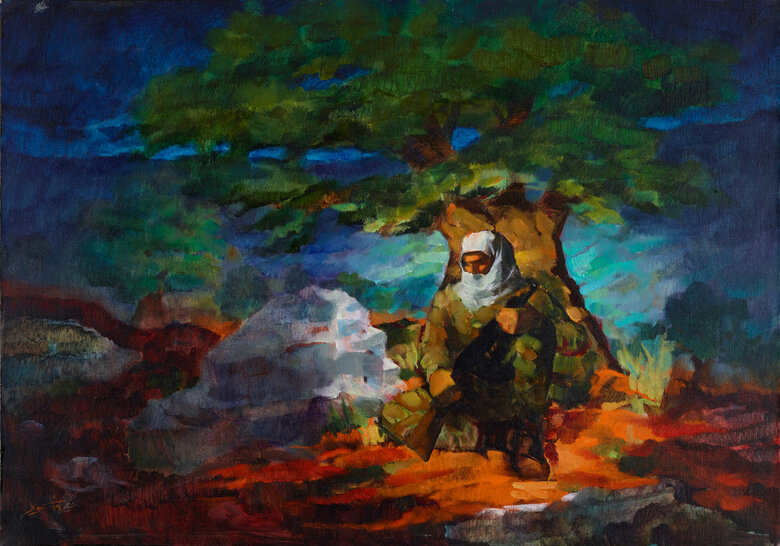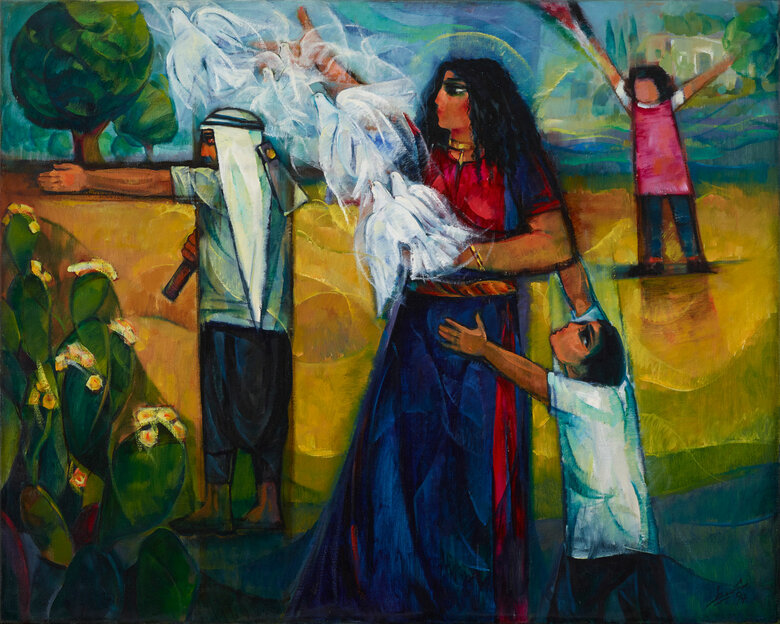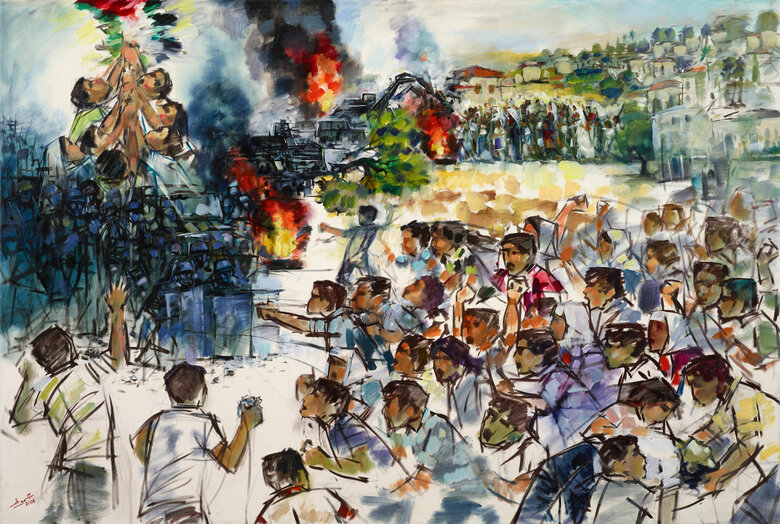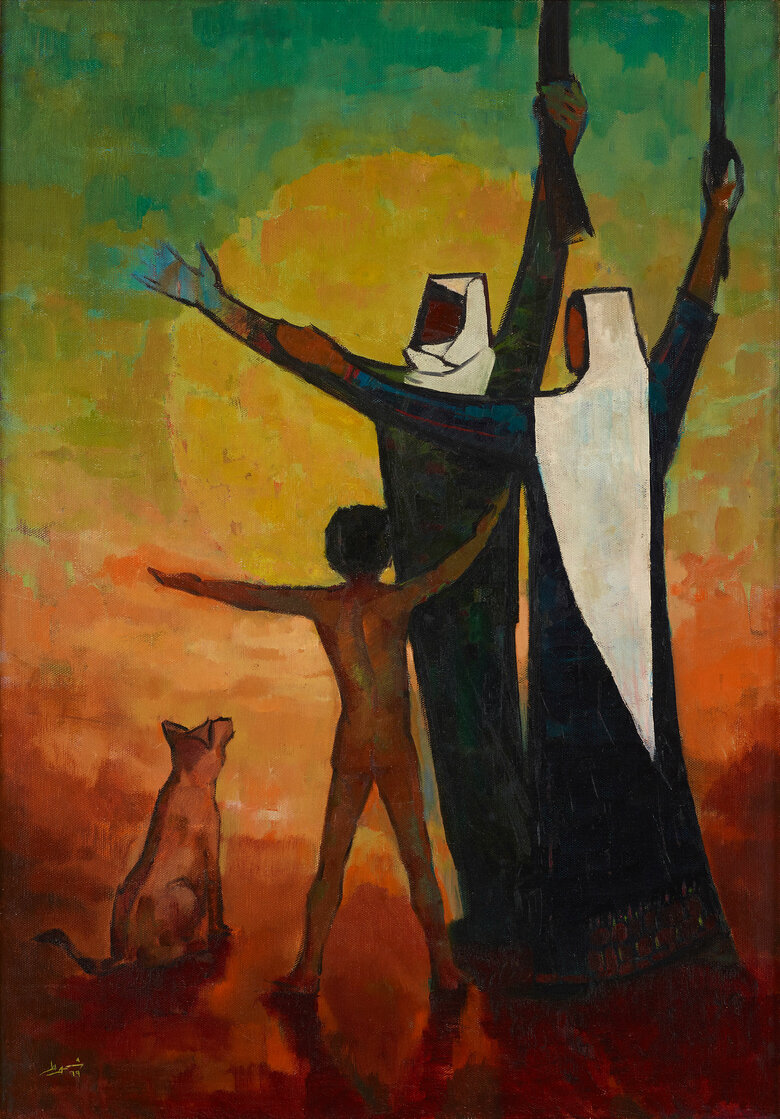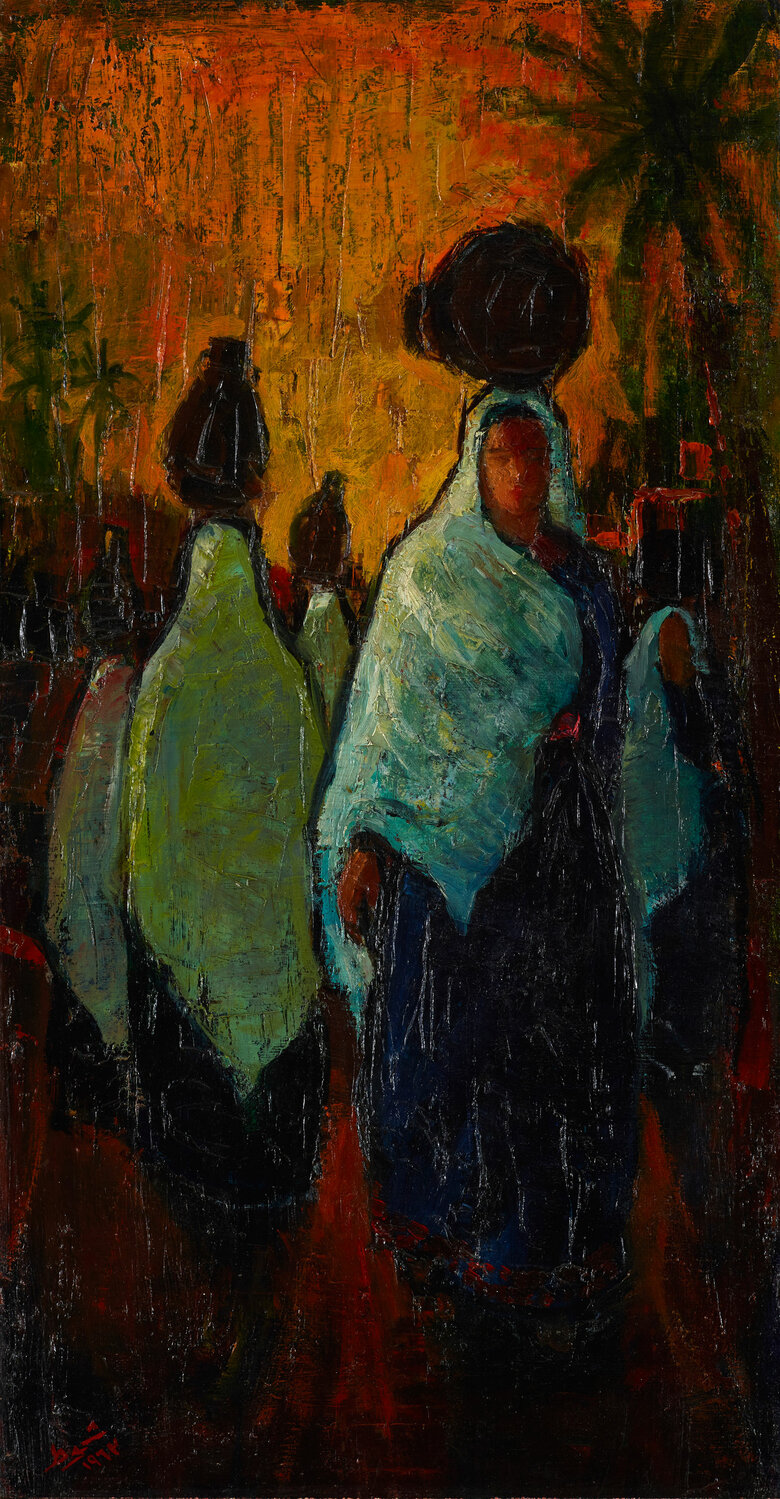Ismail Shammout's painting, Here Sat my Father, 1957 ,هنا كان أبي, depicts a
child seemingly orphaned by the Israeli military attacks on Palestine. The
emaciated child, barefoot with slumped shoulders, sits next to a blood-
stained broken stool/kursi. He stares morosely at the kursi where his father
used to sit, his own little body streaked with blood.
The painting's somber color palette, characterized by dark reds and ochre tones, heightens the oppressiveness of wartime destruction. Similarly, the desolate background of bombarded houses and burnt trees intensifies the sense of despair. The theme of parental loss is central to this piece, symbol- ized here by the three-legged kursi, where its fourth leg had been broken, and the roofless house. Both elements suggest the child's loss of protection and stability, while the bright white of his shirt emphasizes his innocence amidst all the destruction.
Here Sat my Father exemplifies Shammout’s early painting style, particularly evident in his first critically acclaimed work, Where To?, 1953, which had come to be known as the symbol of the Palestinian cause. His works during this period favored an expressive figurative style, where the focus, as seen in this painting, was on emotional intensity, bold brushwork, subjective representation, as well as symbolism and metaphor. His earlier works, up until the early 1960s, often revolved around themes of displacement and suffering in relation to the 1948 Nakba and his personal experience of the Lydda Death March. The coming decades, especially between the 1960s and 1970s, would see a general shift by the artist to a more vibrant palette that prioritizes resistance in the face of oppression.

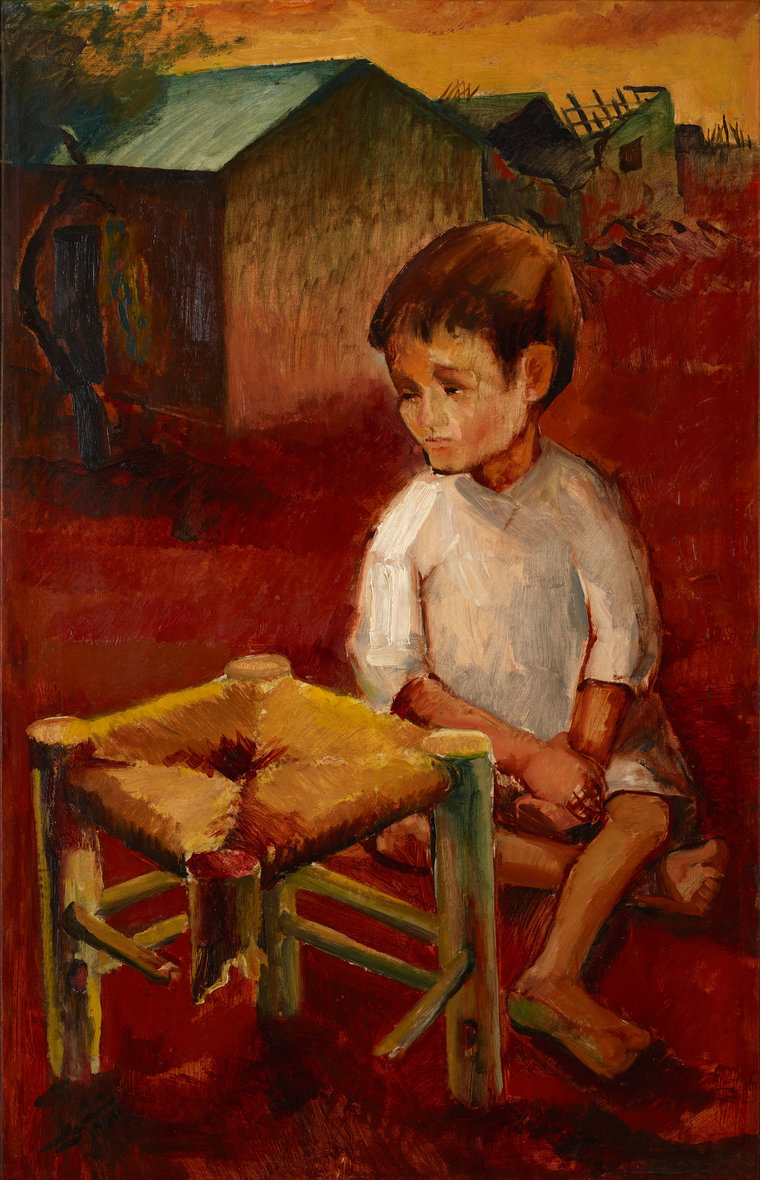

-Front-edited.jpg)
-Front-edited.jpg)
